Wellness Spots to Jumpstart Your Year
Read More
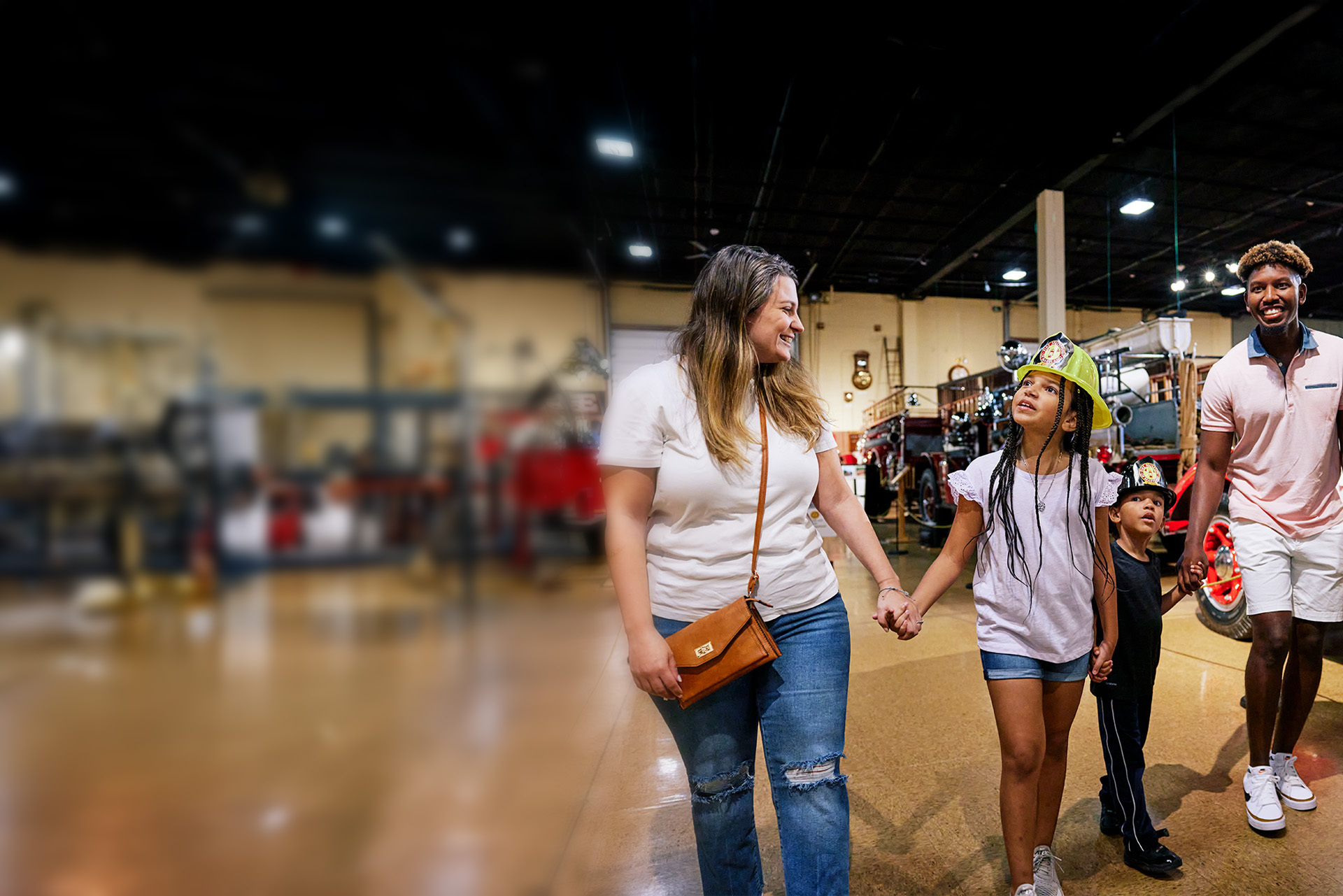
Baltimore County is yours to discover. As Maryland & America 250 approaches, uncover the sites and stories that connect our County to the state's history.
Image: Fire Museum of Maryland
Baltimore County is yours to discover. As Maryland & America 250 approaches, uncover the sites and stories that connect our County to the state's history.
Image: Fire Museum of Maryland
Baltimore County is yours to discover. As Maryland & America 250 approaches, uncover the sites and stories that connect our County to the state's history.
Image: Fire Museum of Maryland
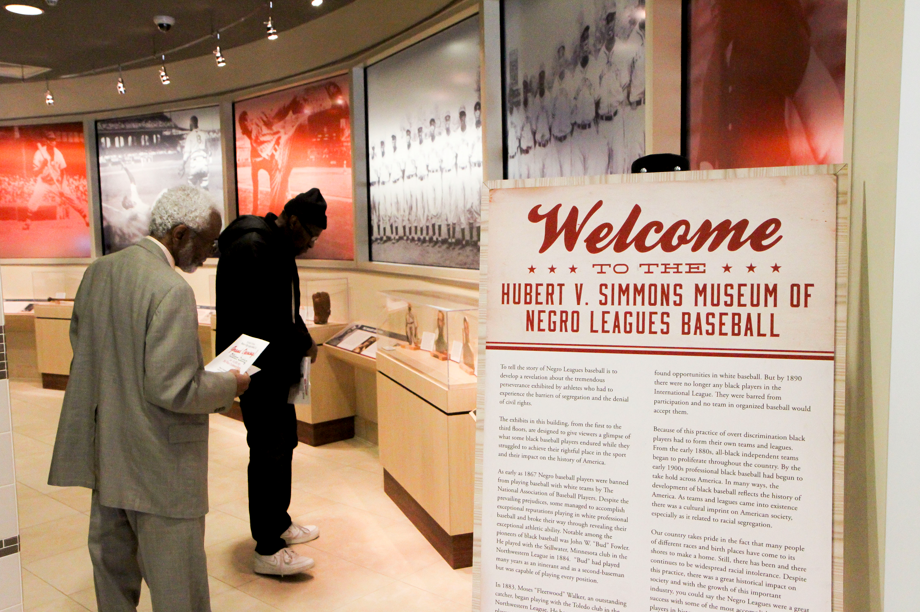
Hubert V. Simmons Museum of Negro Leagues Baseball
Historical Society of Baltimore County Museum – Cockeysville
For over 60 years, the Historical Society of Baltimore County Museum has collected and preserved the rich history of Baltimore County, dating back to the 1600s. Their research center houses 300+ years of more than 9,000 artifacts, 8,000 photographs, and hundreds of historic maps from the roots of Native Americans, pioneers, soldiers, mill workers, political leaders, and more.
Glenn L Martin Maryland Aviation Museum – Middle River
Fly back in time at the Glenn L. Martin Maryland Aviation Museum and explore how Martin pioneered the aviation world. Walk through their indoor museum before taking a trip down their outdoor flightline with 15 different aircrafts – each complete with their own heroic tales.
The Fire Museum of Maryland – Lutherville
Since 1971, The Fire Museum has been telling stories of the history, technology, and innovation of urban fire service in the U.S. One of the largest fire museums in the country houses a world-class collection of historic hand engines, firefighting tools, antique toys, a working Fire Alarm Office, and an exhibit of the Great Baltimore Fire of 1904.
Hubert V. Simmons Museum of Negro Leagues Baseball – Owings Mills
Swing over to the Hubert V. Simmons Museum of Negro Leagues Baseball and catch the preserved legacies of the African American baseball players who heroically pioneered their way through racial and social barriers, inspiring future generations of the Black community. The museum honors their enduring spirit and contributions to America’s pastime through collectibles, photos, books, artifacts, and memorabilia – telling the pivotal story of the Negro Leagues from the 1800s to the 1950s.
Natural History Society of Maryland Exhibit
The Natural History Society of Maryland explores and preserves Maryland’s natural treasures, offering programs, lectures, workshops, and courses on various natural science subjects. Collections dating from the 1800s include minerals, fossils, artifacts, and more from the Maryland and mid-Atlantic region.
Other Notable Sites:
Heritage Society of Essex and Middle River Museum – Essex
Diggs-Johnson Museum – Woodstock
Robert W. and Diane E. Gibson Museum of Sheppard Pratt – Towson
The Computer Museum – Hunt Valley
National Electronics Museum – Hunt Valley
Maryland Horse Library and Education Center – Reisterstown
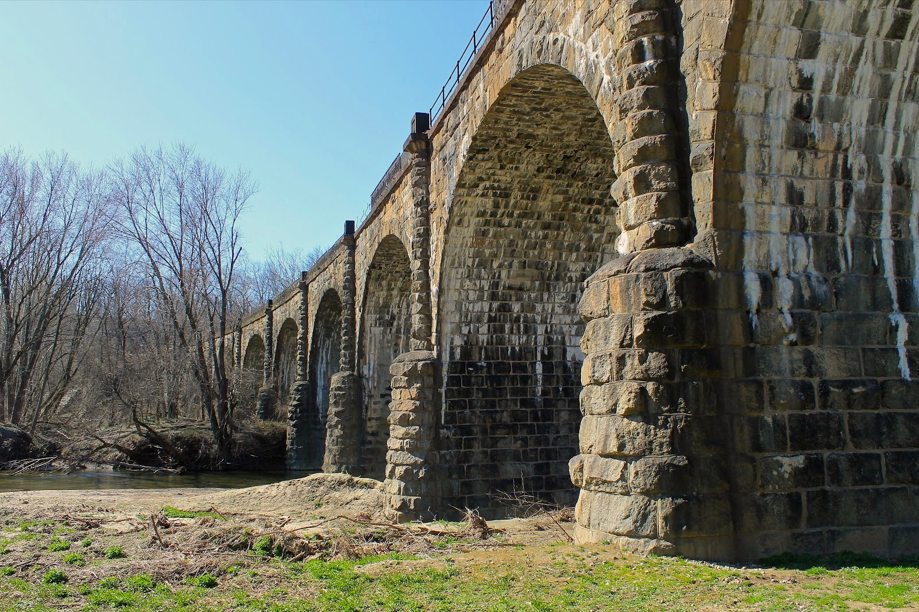
Thomas Viaduct Bridge at Patapsco Valley State Park
Thomas Viaduct Bridge – Patapsco Valley State Park – Halethorpe
Nestled in the center of the Patapsco Valley State Park stands a behemoth landmark that symbolizes the Valley’s forefront position of the industrial revolution era. In the early 19th century, The Thomas Viaduct Bridge was as groundbreaking as its stature. The 60-ft tall, curved granite arches were designed by B&O engineer Benjamin Latrobe II and gently constructed by John McCartney, an engineer from Ohio. Since the first successful train crossing in 1835, the Thomas Viaduct has played a pivotal role in rail transportation by serving as a major connection between Baltimore and Washington. Spanning over 200 yards across the Patapsco River, the bridge is designated a National Historic Landmark and a National Historic Civil Engineering Landmark.
Fort Howard Park – Edgemere
Located on the southern most point of Baltimore County, off the fringes of Edgemere, lies the small peninsula where American soldiers saved Baltimore from the largest invasion of the United States to date. During the War of 1812 on September 12, 1814, Fort Howard, originally known as North Point, served as the site in which the British landed nearly 7,000 men to capture and burn Baltimore (also known as Battle of Baltimore). However, the attack was stalled when the popular British commanding general was killed, eventually causing them to retreat and sail out of Maryland. Fort Howard turned into the coastal artillery headquarters for Baltimore during the late 19th and early 20th centuries, earning the nickname “Bulldog at Baltimore’s Gate.”
North Point State Park – Edgemere
Located adjacent to Fort Howard, North Point State Park is notable for its centuries-long agricultural history and archaeological evidence of human occupation dating back 9,000 years. British troops passed through this park en route to invade Baltimore during the War of 1812. For the first half of the 20th century, a portion of the park served as the Bay Shore Amusement Park – a lively, attractive destination for visitors that included a bowling alley, dance hall, restaurant, and a 1,000-foot pier. Accessible only by trolley from Baltimore City.
Benjamin Banneker Historical Park and Museum – Oella
Benjamin Banneker Historical Park and Museum is a community for those who value history, science, culture, and education. Dedicated to preserving and promoting the legacy of Benjamin Banneker—an early African American scientist, mathematician, astronomer, farmer, and abolitionist—this space shares compelling stories, rare facts, and ongoing updates related to his life and work. The Museum sits on the site of Banneker’s former farmstead featuring exhibits, artifacts, walking trails, archaeological sites, and interpretive programs that explore Banneker’s many contributions and the broader African American experience in early America.
Other Notable Sites:
Freedom Trail Historic East Towson – Towson
Towson Walking Tour – Towson
CCBC Walking Tour – Catonsville
Lime Kilns, Cromwell Valley Park – Parkville
Alberton Trail, Patapsco Valley State Park – Windsor Mill
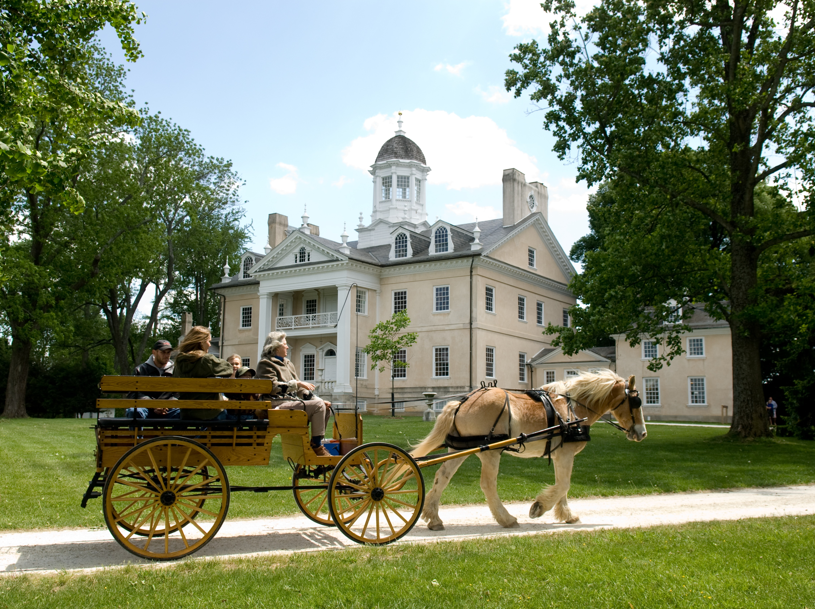
Hampton National Historic Site
Hampton National Historic Site – Towson
A complex, yet significant, part of U.S. history can be told through the Hampton National Historic Site, located in Towson. The Hampton Mansion, completed in 1790, encompassed 24,000 square feet on a 25,000-acre plantation. The beautiful Georgian-style private residence became a symbol of the dichotomy between wealth and oppression. Seven generations of the Ridgely family owned the estate which functioned as a major plantation – relying on the labor of hundreds of enslaved workers and indentures servants. Hampton is the first historic site of its kind within the National Park Service. Since 1950, visitors have been able to learn about America’s development at a time when the nation struggled to define freedom.
Manor Mill – Monkton
This historic grist mill tucked into the rolling green hills of Monkton dates back before the American Revolutionary War. The original Manor Mill was established in 1742, but after several ownership changes the current structure was built atop the stone foundation in the early 1800s. Over the years it served as a significant source of grinded grains for the community, playing a major role in Maryland’s industrial growth. Manor Mill is recognized on the National Register of Historic Landmarks, and now serves as a community, art, and workshop space open to the public.
Located less than a mile away is the Monkton Train Station, which served as a key stop on the Northern Central Railway and played a vital role in transporting supplies and soldiers during the Civil War. The area now functions as a museum and cultural landmark for the community. The Monkton Hotel and Cafe, which also stands nearby, served as a hub for travelers, merchants, and city-dwellers during the mid to late 19th century, and is still offers overnight accommodations.
Pikesville Armory – Pikesville
Built between the 1880s and 1903, the historic site of Pikesville Armory acted as a military base for thousands of service members and played an integral role in World War II. Their 110th Field Artillery Battalion was the first artillery unit to fire on Omaha Beach in the D-Day invasion. Although the Pikesville Armory is no longer an active military base, they still honor their roots and regularly host hundreds of veterans and associations. The 14-acre historic campus has been newly transformed and reimagined into an arts-infused intergenerational community space designed to promote economic growth in the northwest corridor of Baltimore County.
Jericho Covered Bridge – Kingsville
A piece of haunted history still stands connecting the outlines of Baltimore and Harford Counties. The tales of strange occurrences have yet to be confirmed with concrete evidence, but the eerie folklore surrounding the Jericho Covered Bridge in Kingsville is enough to be considered a local legend. Spanning 88-feet long and clearing just 12-feet high, the one-lane bridge built in 1865 was originally constructed for horse-drawn carriages. Although it has gone through three reconstructions, the rumors of its dark past still remain in the Burr arch-truss covered walls. There have been many chilling reports of apparitions, handprints on vehicles, and cars stalling in the middle of the bridge at night. It remains one of the few covered bridges left in Maryland and is a popular visiting site for thrill seekers and ghost hunters.
Catonsville Junction Trolley Station – Catonsville
At the turn of the 20th century, the Catonsville Junction quickly created its own path in the history of transportation in Maryland. The electrified streetcar established a vital transfer point connecting the #8, #9, and #14 trolley lines, which provided easier commutes for residents and spurred the development of a small business community. The efficient mode of transportation connecting Catonsville and Baltimore contributed to the town’s status as one of the nation’s earliest commuter suburbs. However, the streetcar came to its final stop on November 3, 1963. The tracks were immediately removed, ending the trolley era and beginning a period of decline. By the late 90s, the property was restored and converted to a walking/biking trail that is still maintained today.
Other Notable Sites:
Ballestone-Stansbury House – Essex
BCPL – Reisterstown Branch – Reisterstown
Gramercy Mansion B&B – Stevenson
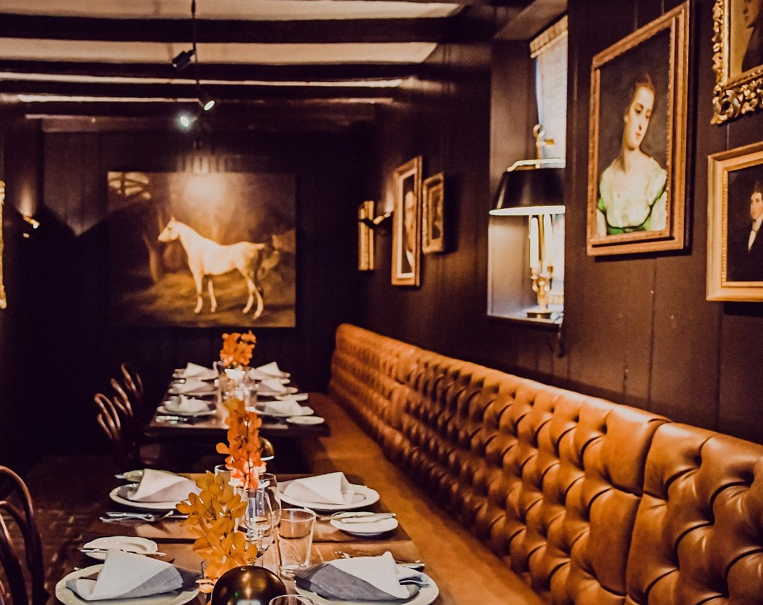
The Milton Inn
Boordy Vineyards – Hydes
The state’s oldest commercial winery remains a cornerstone of the industry in Maryland. For over 80 years, Boordy Vineyards has been a model of excellence, continually modernizing its winemaking facilities, replanting vineyards, and sustaining a commitment to quality that has earned national recognition. Their meticulously restored 19th-century barn offers the rustic charm that makes it a distinctive venue for wine-tasting, events, and gatherings.
The Milton Inn – Sparks
Tucked into the countryside of Sparks, Maryland stands a treasured 285-year-old fieldstone estate, once used as a coach stop for Quakers, a schoolhouse attended by John Wilkes Booth, an antique shop, and presently the Milton Inn – a French rustic fine-dining landmark. The meticulously renovated Milton Inn weaves the historic colonial charm of the 1700s with a modern French culinary flair.
The Reister’s Daughter – Reisterstown
In 1758, John Reister acquired 20 acres of land on the Conewago Road, adding to his existing 50 acres of farmland which he purchased 12 years prior. He named the land “Reister’s Desire” where he built a tavern inn, providing food, drink, and lodging for travelers. Five years later, Reister acquired the adjoining 83-acre property, securing land on both sides of the main road and thereby establishing the heart of Reisterstown. The second oldest surviving structure, built in 1779, now houses a coffee shop called “Reister’s Daughter,” where the original brick walls and exposed wooden beams create a charming atmosphere for the popular neighborhood cafe.
The Roast – Glen Arm
The Roast Coffee and Cafe has been serving the Glen Arm community and surrounding areas since early 2024. What is now a quaint, community coffee shop in the quiet corners of Glen Arm was once a bustling railroad station known as the “Ma and Pa Whistle Stop.” Over 115 years ago, in 1909, the Glen Arm Station began hauling commercial freight and transporting passengers between Maryland and Pennsylvania. It is believed to be one of the last surviving examples of the architectural Victorian-style station. The building is an official Baltimore County Historical Landmark.
Other Notable Sites:
Bull House Winery – Parkton
Oregon Grille – Hunt Valley
John Brown General & Butchery/Coffee – Cockeysville
The Valley Inn – Lutherville-Timonium